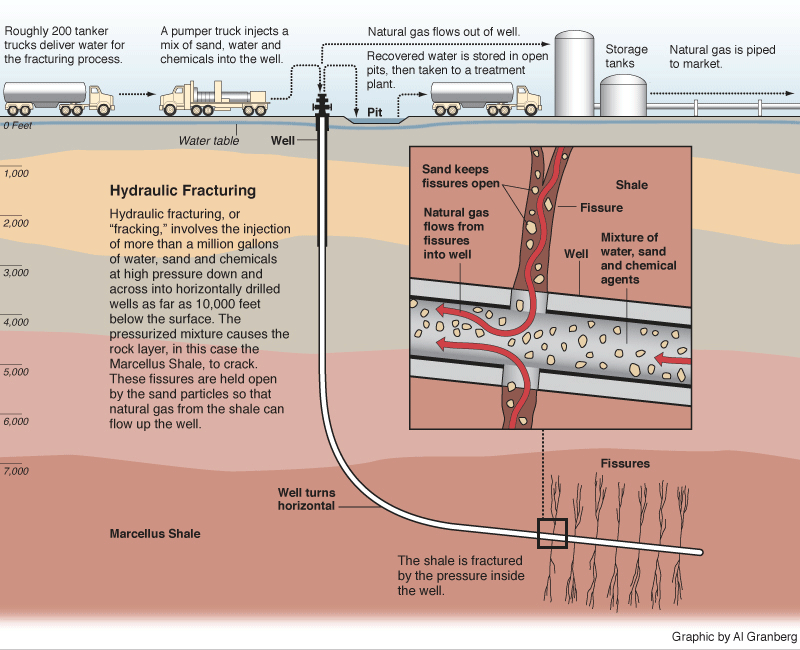 By Alysa Landry
By Alysa LandryNavajo Times WASHINGTON, May 23, 2013
Hydraulic fracturing on Indian land may become more difficult under new rules proposed by the Department of the Interior and the Bureau of Land Management.
The Interior Department on May 16 issued new draft rules for hydraulic fracturing on public and Indian lands.
Fracturing, or “fracking,” is the process of drilling and injecting a mixture of water, sand and chemicals into the ground at high pressure to crack shale formations and unlock oil and gas.
The process is controversial because fracking releases methane gas and other toxic chemicals, which can contaminate nearby groundwater. This can be especially dangerous on the 56 million acres of Indian land in the country. On the more isolated reservations like the Navajo Nation, people and livestock depend on well water for drinking, cooking and washing.
Approximately 500,000 oil and gas wells are active in the United States. That includes 92,000 on public and tribal land, where about 13 percent of the nation’s natural gas and 5 percent of its oil are produced, according to statistics from the Interior Department.
Ninety percent of wells drilled on federal and Indian lands use fracking. Yet the BLM’s current regulations governing fracking on public and tribal lands are more than 30 years old and were not designed to address modern fracking technology. The revised rules would modernize management of the industry and help establish baseline safeguards to help protect the environment and reduce the human risk.
“We are proposing some common-sense updates that increase safety while also providing flexibility and facilitating coordination with states and tribes,” said Interior Secretary Sally Jewell. “As we continue to offer millions of acres of America’s public lands for oil and gas development, it is important that the public has full confidence that the right safety and environmental protections are in place.”
The new draft rules come after an initial proposal last fall. The Interior Department received more than 177,000 public comments on those rules. The updated draft proposal will be subject to a new 30-day public comment period.
The updated draft keeps the main components of the initial proposal, which requires operators to disclose the chemicals they use in fracking on public or tribal land, verify that fluids are not contaminating groundwater and confirm that management plans are in place for handling fluids that flow back to the surface.
Yet the draft already has drawn criticism from both environmentalists and industry leaders.
Industry officials object to what they call redundant regulation, while environmentalists say the standards do not adequately safeguard drinking water.
